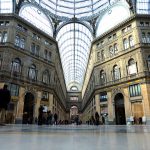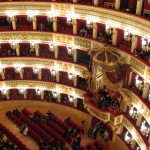Napoli
In the last few years Napoli has become one of the favorite destinations for all those Italian and foreign tourists who love spending their holidays in cities of artistic interest. Unlike cities in which art is stored in museums and daily life happens on the streets, Napoli’s distinctive mark is its folklore: people living and working among the artistic beauties of the city. Buildings, churches, streets, ancient fortresses and castles in the sea, as well as natural caves and places impregnated with mystery and mysticism, all of which makes Naples unforgettable in the minds of all travelers.
Napoli is not only art and culture. During its long history, Napoli achieved several scientific and technological accomplishments, such as the first steamboat in the Mediterranean Sea (1818), built in the shipyard of Stanislao Filosa al ponte di Vigliena, near Napoli, and the first railway in the Italian peninsula (1839), which connected Napoli to Portici.
Meanwhile, Napoli could count on a very large and efficient merchant navy. Moreover, the first railway tunnel in the world was built there. Among the other achievements, one worth mentioning is the first suspension bridge in Continental Europe (1832), the first gaslight in Italy (1839), the first volcano observatory in the world, l’Osservatorio Vesuviano (1841), the first and actual archaeological excavations in the world (in the ancient cities of Pompei and Ercolano), the first faculty of Economics in Europe and the first faculty of Astronomy in Italy . The first suspension bridge, built in iron, the “Real Ferdinando” on the river Garigliano and it was built in the Reali Ferriere factory and Weapons factory in Mongiana. The rails for the first Italian railways were built in Mongiana, near Napoli, as well. All the rails of the old railways that went from the south to as far as Bologna were built in Mongiana.
Napoli is noted for its numerous higher education institutes and research centers. Napoli hosts what is thought to be the oldest state university in the world, in the form of the University of Napoli Federico II, which was founded by the emperor Federico II in 1224. The university is among the most prominent in Italy, with around 100,000 students and over 3,000 professors in 2007. It is host to the Botanical Garden of Napoli, which was opened in 1807 by Giuseppe Bonaparte, using plans drawn up under the Bourbon king Ferdinand IV. The garden’s 15 hectares feature around 25,000 samples of vegetation, representing over 10,000 plant species.
Besides arts, history, culture, technology and education, Napoli is famous in the world for its inimitable food. Traditional Neapolitan cooking is very rich and complex, with many simple but complete foods, such as pizza, as well as elaborate and tasty dishes. Napoli and its surrounding are a magical place where colors, flavors, culture and history are intertwined in a charming mix of knowledge























